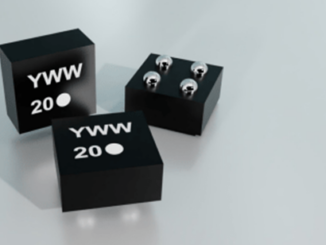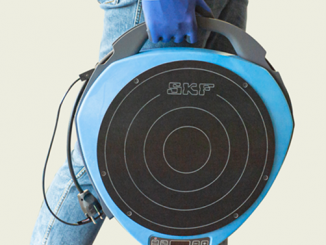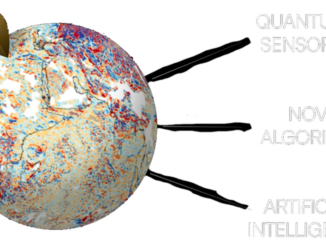
Look around life science laboratories most anywhere in the world and before long you will likely come across magnetic reagents along with a few specially designed magnetic kits and laboratory tools from OZ Biosciences. The company’s Magnetofection technology is playing an important role in advancing biotech research and the development of new medicines as its precisely designed iron oxide nanoparticles gain ever more specificity in targeting molecules under scrutiny.
OZ Biosciences focuses on delivery technologies for biomolecules such as DNA, RNA and protein for the worldwide scientific community and pharmaceutical industry. Tucked away in a picturesque scientific and technology park on the outskirts of Marseilles, France, the company has been developing innovative molecular delivery systems since 2003.
The period has been a time of technological revolutions for the life sciences. The progress achieved in genomic, functional genomic and proteomic areas has created fabulous opportunities for better understanding of basic biological processes and for the development of the next generation of medicines. Lately, application of Magnetofection to whole, living organisms has been receiving particular attention.
The company’s extensive line of such products is based around biodegradable magnetic nanoparticles made of iron oxide that are coated with specific proprietary cationic molecules varying upon applications. The principle is to associate nucleic acids, transfection reagents or viruses with specific magnetic nanoparticles. The resulting molecular complexes are then concentrated and transported into cells supported by an appropriate magnetic field. In this way, the exploitation of a magnetic force exerted upon gene vectors allows a very rapid concentration of the entire applied vector dose on cells, so that 100% of the cells get in contact with a significant vector dose, and promotes cellular uptake.
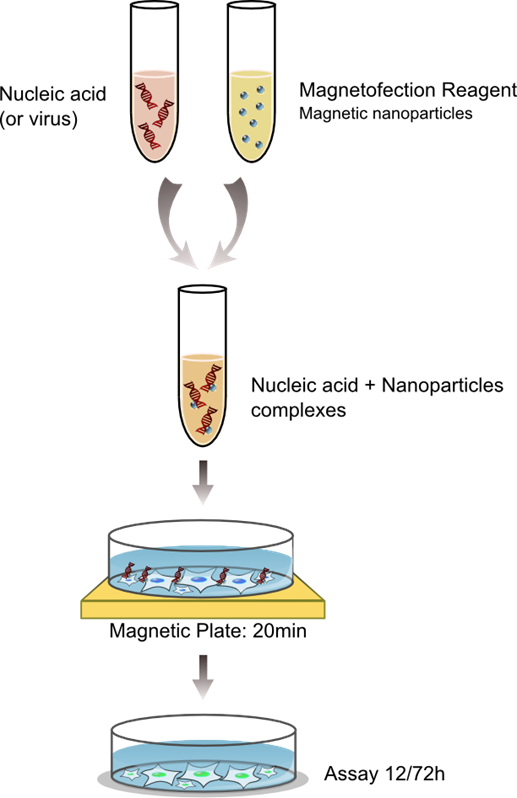
The technology has become a simple and highly efficient method to transfect primary cells and hard to transfect cells, inspired by validated and recognized magnetic drug targeting methods. An array of application specific reagents has been developed by the company for both in vitro use, meaning outside of a living organism, initially, and now also for in vivo use, meaning within an entire living organism.
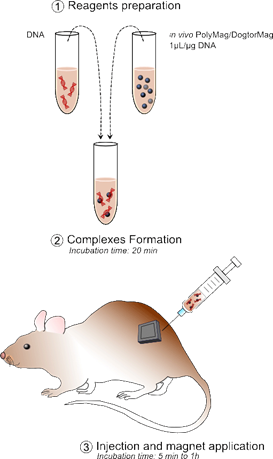
Lately, OZ Biosciences’ in vivo solutions have received particular attention. Designed for in vivo targeted transfection and infection, the system combines magnetic nanoparticles and nucleic acid vectors that will be retained after injection at the magnetically targeted site. In this way, targeted delivery minimizes systemic distribution and reduces toxicity. This allows reducing the required nucleic acid or virus doses and the process time of delivery which is crucial for improvement of in vivo nucleic acid delivery.
Their association with the gene vectors such as DNA, siRNA, ODN or virus is achieved by salt-induced colloidal aggregation and electrostatic interaction. The magnetic particles are then concentrated onto cells by the influence of an external magnetic field generated by a specific magnetic plate. The cellular uptake of the genetic material is accomplished by endocytosis and pinocytosis, two natural biological processes.
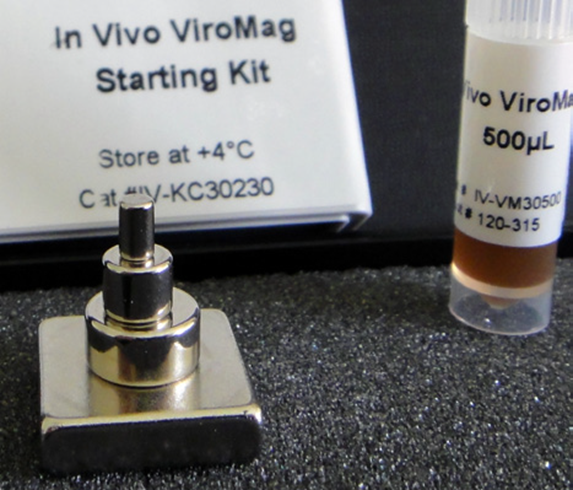
Complementary to the reagents is an in vivo magnet set that includes three cylinders ranging from 2mm to 10mm and a square magnet sized 18mm by 18 mm. The variations accommodate positioning either internally for deep organs or focalized gene transfer, or externally for large or isolated organs such as liver, brain, muscle, subcutaneous tumor.
Positioned as a versatile and universal technology adapted to all types of nucleic acids and viruses, the Magnetofection platform has evolved to a broad range of reagents designed according to defined applications. A few examples are NeuroMag for neurons transfection, ViroMax and AdenoMag for various viruses, FluoMag for fluorescent requirements, PolyMag and LipoMag for various nucleic acids.
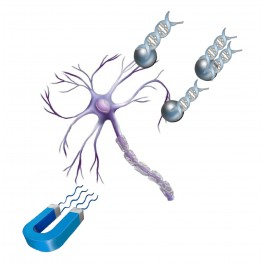
NeuroMag transfection reagent is designed specifically for neurons from 1 DIV to 21 DIV. It has proven to be extremely efficient in transfecting a large variety of primary neurons such as cortical, hippocampal, dorsal root ganglion and motor neurons with all types of nucleic acids. Due to its unique properties, NeuroMag allows following transfected neurons during several days.
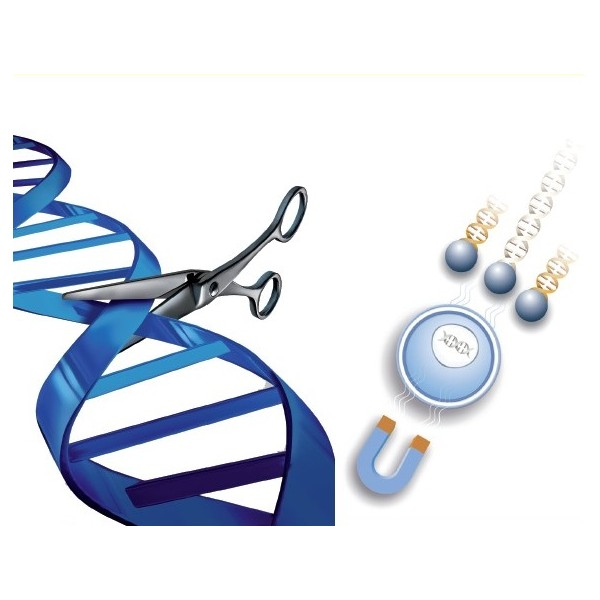
PolyMag CRISPR kit is a magnet assisted transfection reagent optimized to deliver high level of plasmid DNA and varieties of RNA for gene editing experiments, providing high transfection efficiency without toxicity.
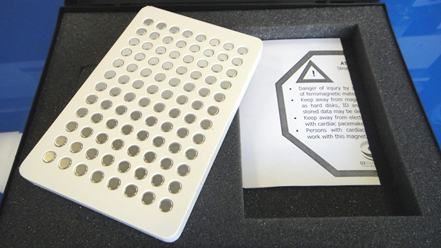
OZ Biosciences has also developed various assay kits and tools for its systems. The only equipment requirement for standard Magnetofection is a specially designed reusable magnetic plate since the technology requires an appropriate, heterogenous magnetic field that magnetizes the nanoparticles in solution, forms a very strong gradient to attract the nanoparticles onto cells and covers all the surface of the culture dish. Three magnetic plates are available: Super Magnetic Plate, Magnetic Plate with 96 individual magnets and Mega Magnetic Plate.
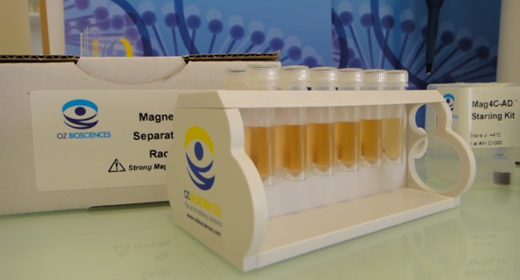
Another tool is a magnetic separation rack that holds various sizes of standard laboratory tubes. It is specifically designed for capture, concentration, washing and elution when using the company’s Mag4C technology. Mag4C magnetic nanoparticles capture viruses in culture medium by electrostatic and hydrophobic interactions with 80-99 % efficiency. Once captured onto magnetic beads, viruses can be: concentrated and stored with a conservation buffer or directly used for cell culture, molecular biology or other assays.

Headquarters of the firm are at the Luminy Scientific Park near Marseille, close to a cluster of academic and commercial biological research activities. It also has a branch operation in San Diego, CA. The company was founded by three internationally recognized experts in molecular delivery systems, gene therapy and vaccines: Olivier Zelphati, the CEO; Christian Plank and Jean Haensler, who both serve as scientific advisors. Over its 17 years, it has received several prestigious national and international awards, and numerous government grants helping to fund its research.
For more info, see www.ozbiosciences.com.

